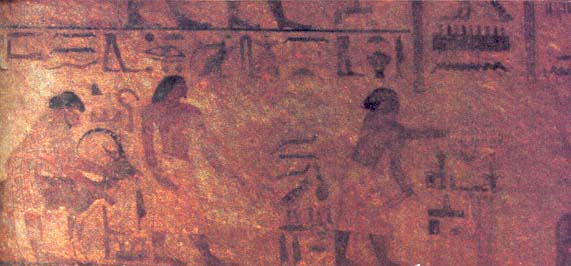Image Details

Erich Lessing
Semites in Egypt. Bearing the title Hyksos, a figure named Abisha (leaning over an ibex just to the right of center) leads his Semitic clansmen into Egypt to conduct trade. This scene dates to about 1890 B.C. and is preserved at Beni Hasan, halfway between Cairo and Luxor. The Hyksos (a Greek term meaning “ruler of foreign lands” or “shepherd kings”) were Canaanites who ruled Egypt for roughly two and a half centuries, starting in about 1800 B.C. Foreign groups often sojourned in Egypt for business reasons or, at times, to escape from drought—a fact echoed in the Bible’s account of Abraham and Jacob.
While we have Egyptian evidence for Semites entering Egypt, what proof is there for Semites—specifically the ancient Israelites—escaping Egypt? Author Abraham Malamat shows in the accompanying article that while there is little direct corroboration for the Exodus, there is much indirect evidence—not for a sudden Exodus, but for a gradual one that reached a climax about 1200 B.C.
